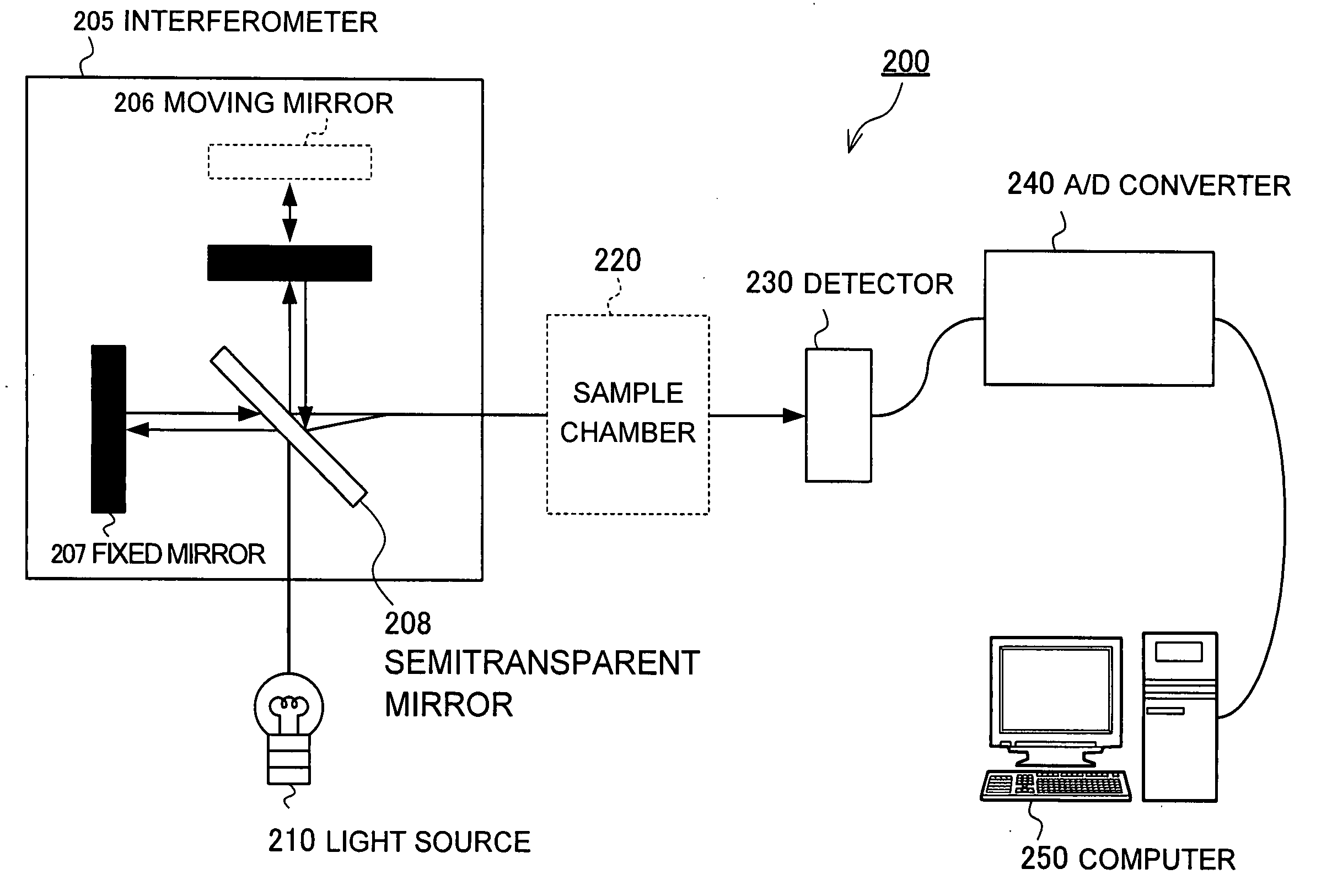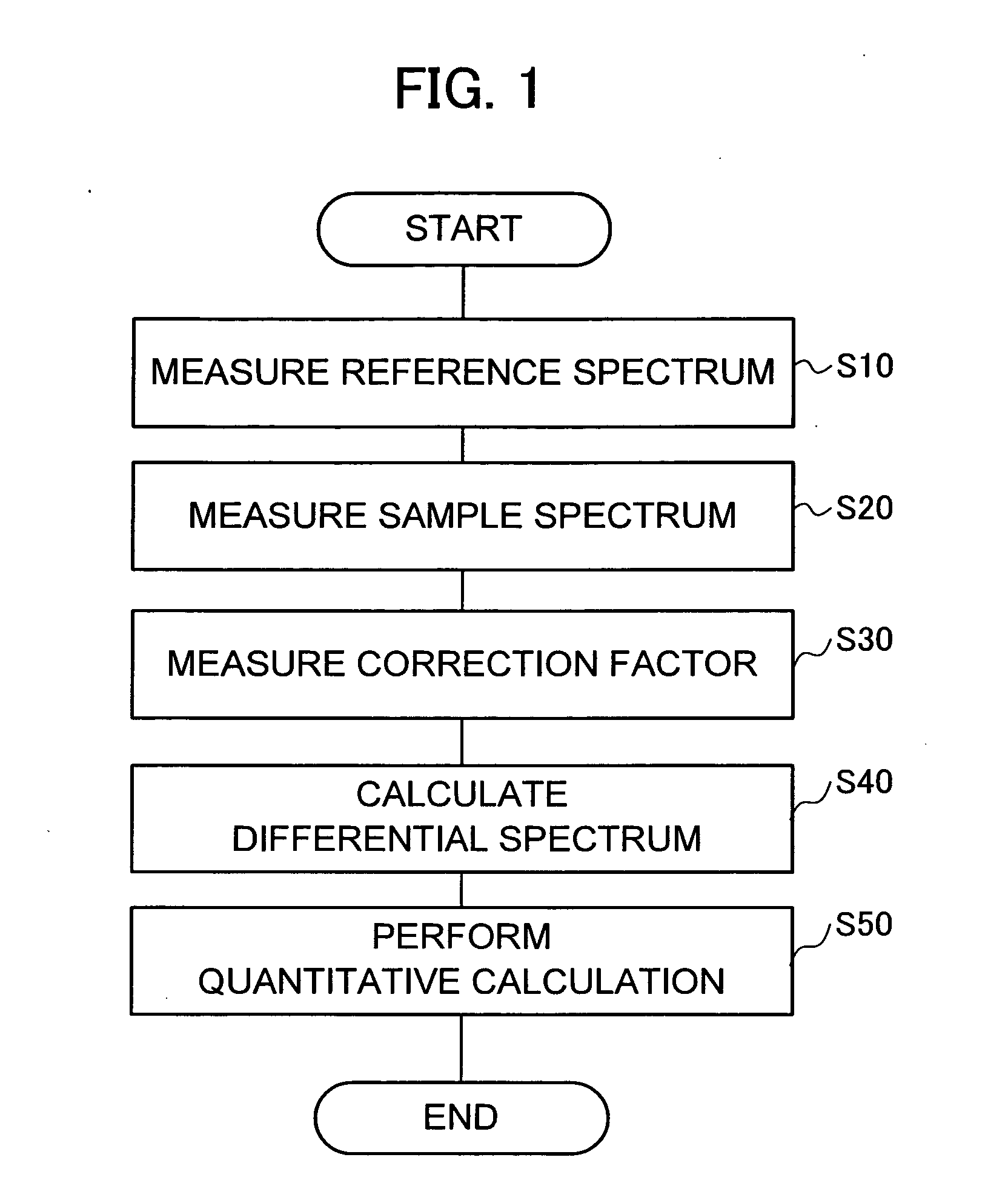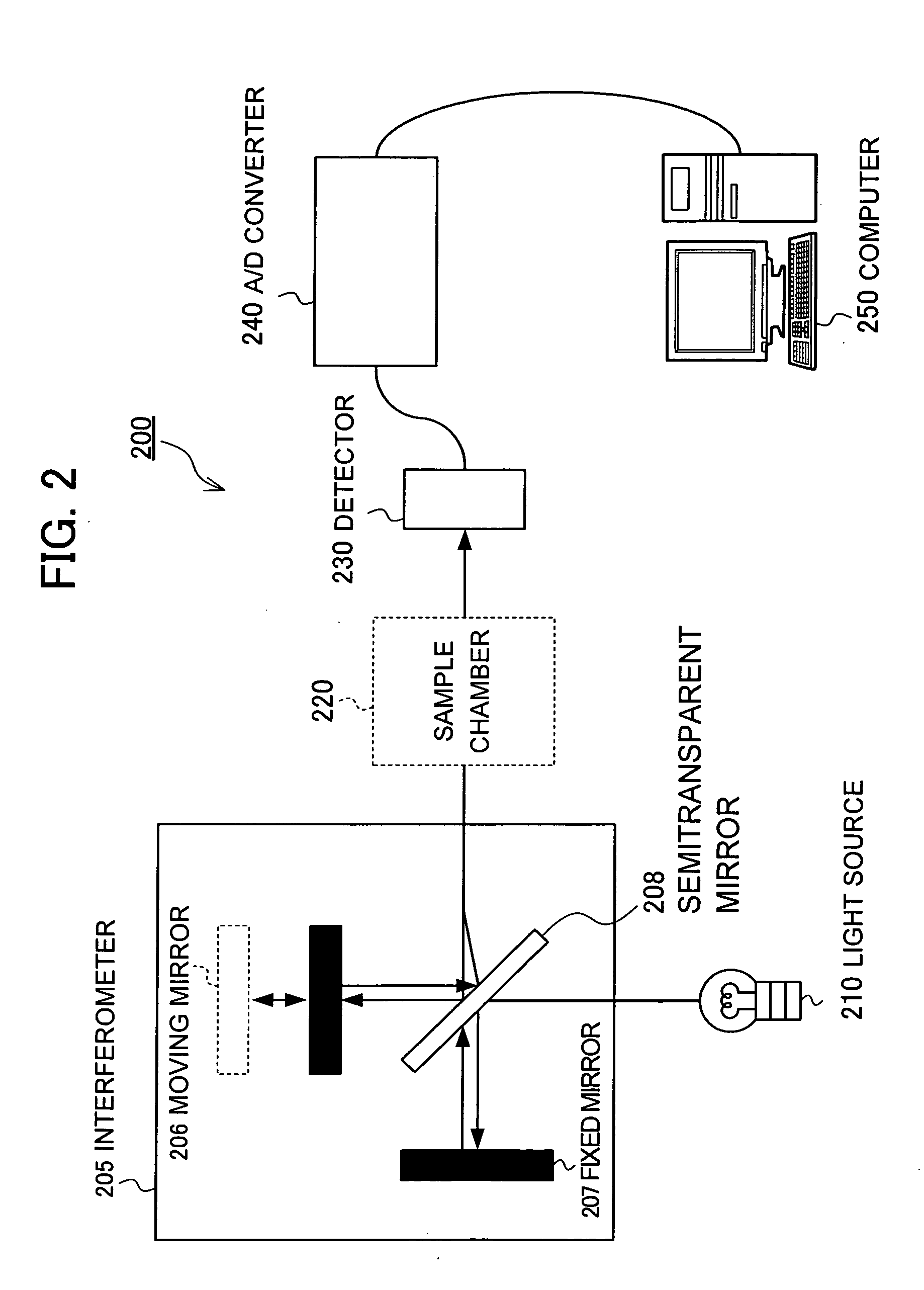Method and apparatus for measuring spectroscopic absorbance
a spectroscopic absorbance and absorbance technology, applied in the field of spectroscopic absorbance measurement, can solve the problems of inability to obtain the exact peak height of the impurity concentration of interest, inability to sufficiently remove the influence of phonon absorbance from the differential spectrum, etc., to achieve satisfactory baseline, enhance detection sensitivity, and effectively remove background influence
- Summary
- Abstract
- Description
- Claims
- Application Information
AI Technical Summary
Benefits of technology
Problems solved by technology
Method used
Image
Examples
example 1
[0056]In Example 1, the wave number shift dependence of the differential spectrum in the method of the present invention is described. FIG. 3 is a diagram showing the wave number shift dependence of the differential spectrum, which is one embodiment of the present invention. As a reference sample, a substantially carbon-free CZ method silicon single crystal was used, and the range of wave numbers from 540 to 660 cm−1 was measured at a wave number resolution of 1 cm−1.
[0057]At first, an infrared spectroscopy spectrum (data R) of the reference sample was obtained, and an infrared spectroscopy spectrum (data S) of a measurement sample for quantitative determination of the concentration of substitutional carbon was obtained. Subsequently, by using a computer, a2 of Equation 3 was assigned a certain constant value shifting the wave number of data R to thereby obtain an infrared spectroscopy spectrum (data R′). In addition, a differential spectrum (data D) was obtained by using the least ...
example 2
[0061]In Example 2, the differential spectrum after correction in the method of the present invention is described. FIG. 4 (a) is a differential spectrum after FT-IR correction for quantitative determination of substitutional carbon in a silicon single crystal, which is one embodiment of the present invention. As for the FT-IR differential spectrum using the wave number shift correction in the present invention, the transverse axis is wave number [cm−1], and the vertical axis is differential absorbance.
[0062]As described in Example 1, the method of calculating a differential spectrum is as follows. A reference spectrum obtained from a substantially carbon-free reference sample and a measurement spectrum obtained from a measurement sample for the quantitative determination of the concentration of substitutional carbon were measured. Subsequently, a wave number shift amount, which satisfies the condition to minimize the sum of squared residual, and a baseline offset amount were determ...
example 3
[0066]In Example 3, the evaluation example of the detection limit in the method of the present invention is described. FIG. 5 is an example of evaluation by use of the concept of the signal-to-noise ratio (SN ratio), where the carbon peak height is a signal, and the data deviation in the right and left baseline region is noise, in a differential spectrum after correction which is one embodiment of the present invention. The actual measurement data was the same as the data of the aforementioned differential spectrum after correction in the present invention described with reference to FIG. 4 as well as the data of the differential spectrum in the conventional method, so the description of the overlapping portions will be omitted.
[0067]FIG. 5(a) is a differential spectrum after FT-IR correction for quantitative determination of substitutional carbon in a silicon single crystal. In this figure, the dotted line shows a baseline 166 for calculating a signal-to-noise ratio, and the solid ...
PUM
| Property | Measurement | Unit |
|---|---|---|
| spectroscopic absorbance | aaaaa | aaaaa |
| differential spectroscopy | aaaaa | aaaaa |
| absorbance | aaaaa | aaaaa |
Abstract
Description
Claims
Application Information
 Login to View More
Login to View More - R&D
- Intellectual Property
- Life Sciences
- Materials
- Tech Scout
- Unparalleled Data Quality
- Higher Quality Content
- 60% Fewer Hallucinations
Browse by: Latest US Patents, China's latest patents, Technical Efficacy Thesaurus, Application Domain, Technology Topic, Popular Technical Reports.
© 2025 PatSnap. All rights reserved.Legal|Privacy policy|Modern Slavery Act Transparency Statement|Sitemap|About US| Contact US: help@patsnap.com



